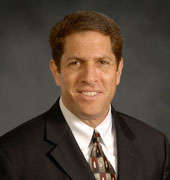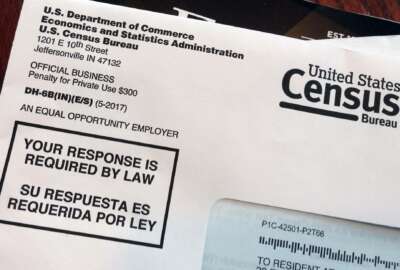
How the Census Bureau can make the most of its IT
As the Census Bureau conducts its field test for the 2020 population count in Providence County, Rhode Island, Congress remains worried the project is falling...
As the Census Bureau conducts its field test for the 2020 population count in Providence County, Rhode Island, Congress remains worried the project is falling behind schedule and over budget.
Last month, Census officials gave members of the House Oversight and Government Reform Committee a status update during a closed-door briefing.
Some lawmakers have expressed concern that the 2020 count will ask U.S. residents about their citizenship status for the first time in several decades. Other have pointed to hurdles the agency has already encountered in delivering what it hopes will be the first tech-driven census.
Since March 16, Providence County households have been able to respond to the 2018 census test online at Census.gov or over the phone through an agency hotline. Last month, the Census Bureau mailed paper questionnaires to area residents. This month, the Census Bureau will follow up with nonresponders.
Earlier in the planning cycle for the 2020 census, the agency planned to conduct full-scale field tests in rural West Virginia and suburban Washington state, but ended up reducing the scope of those field tests to only include address checks.
Robert Groves, a former Census Bureau director under the Obama administration, told Federal News Radio that the ideal field test would use all the processes that have been designed for the next count.
“You’d like, ideally, to test every system that you have in place, or that you want to use,” Groves said.
In March, Atri Kalluri, the chief of the Census Bureau’s Decennial Information Technology Division, said the agency will have 44 of 52 systems up and running for peak operations of the 2018 end-to-end field test.
Since the Census Bureau will only run field test this year, Groves said the agency won’t get as broad a scope of the variables that affect census operations, including how different groups of on-the-ground workers impact the outcome of the test.
“Despite all of the efforts of any organization, including the Census, to have a skill mix that is optimal for whatever you’re doing, there is variation across teams that work on the census,” Groves said.
Census tech
For the upcoming 2020 count, the Census Bureau hopes iPhones and iPads will play a larger role in its enumerators’ toolkits.
The agency has signed a device-as-a-service contract that will give its enumerators the smartphones and tablets, which will come loaded with an app to record census responses.
“About this time in every decade, the Census Bureau attempts to advance in technology, and they’ve succeeded in every decade,” Groves said. “The critical point — the wisdom that’s needed — is that for each new piece of technology, is there a fallback if it doesn’t work perfectly well?”
While the agency planned on making handheld electronic devices a major part of the 2010 census, it largely relied on paper forms for the last decennial census.
“These are the crucial months where the final decisions and go/no-go decisions on new technology have to be made over the coming months. It’s at this point that we rely on the technical expertise of the public servants who’ve been working on this for some years,” Groves said.
What’s next for the 2020 count?
Once the Census Bureau concludes its 2018 field test, it could take months to process all of the data collected. But Groves said from a workflow perspective, the agency will get a much better understanding of what worked, and what did not.
“There are a whole lot of people watching the processes as they unfold. So the diagnosis of what worked and what didn’t work can be made really quite quickly,” he said. “The data themselves are less important than did the processes produce the kind of efficiencies that they’re seeking? Breakdowns will be readily apparent. Less-than-perfect execution will be apparent early. There will be formal evaluations studies, but the kind of big impressions that will be needed to make the big go/no-do decisions, I think, will be evident pretty quickly.”
Since last June, when John Thompson, the Census Bureau’s last permanent director, stepped down, the agency’s top two positions have been filled by senior career employees.
In the meantime, Ron Jarmin has served as the acting Census director, and Enrique Lamas has served as the acting deputy director.
While Groves praised both Jarmin and Lamas for ensuring continuity of operations at the Census Bureau, he urged the Trump administration to appoint new permanent leadership as the agency enters the home stretch of 2020 preparations.
“The two interim people we have are wonderful public servants who are talented and fulfilling their duties in a way that we should all be proud of. Without that formal appointment, however, I have a fear that in critical moments, we’ll have clogged decision-making, and as the months go on, wise and quick decisions are needed,” Groves said.
Copyright © 2024 Federal News Network. All rights reserved. This website is not intended for users located within the European Economic Area.
Jory Heckman is a reporter at Federal News Network covering U.S. Postal Service, IRS, big data and technology issues.
Follow @jheckmanWFED





